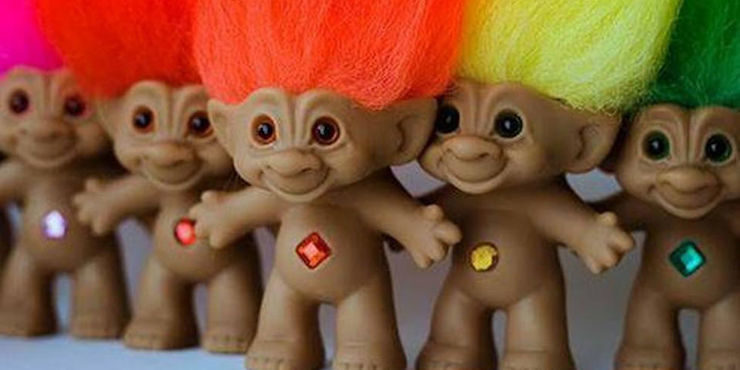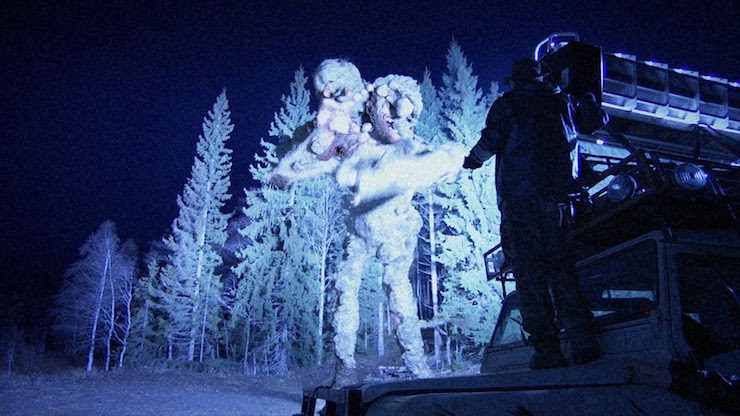One of the great things about being a professor of matters medieval is being able to enjoy how the Middle Ages pops into our popular culture in a variety of interesting ways. It’s an extra level of entertainment, and helps to explain the happy feeling I got when I watched the 2010 film Trollhunter, which I’ll be introducing to you today.
You may not have heard of this film, and honestly that’s a real shame. In my considered opinion, Trollhunter is, simply put, the finest “found footage” mockumentary about hunting trolls in modern Norway that has ever been made. Period.
I mean, unless someone has made another one.
Has someone made another one?!? Oh I do hope so, because I would watch the troll-scat out of that. This is a sub-sub-genre of film that demands to be explored!
Anyway, back to Trollhunter.
The set-up is simple. Early on, we are told—via subtitles unless you can rock the original Norwegian—that there have been a number of mysterious bear killings in Norway: livestock and even people are disappearing, and dead bears are being found in unexpected places. Stranger still, no licensed bear hunters will take credit for the bear kills, leading many to suspect that a poacher is to blame.

Enter our intrepid heroes—Thomas (played by Glenn Erland Tosterud), Johanna (Johanna Mørck), and Kalle (Tomas Alf Larsen)—a trio of college students who set out to find the truth by grabbing their rudimentary videography equipment and stalking a suspected poacher named Hans (Otto Jespersen).
Opening title cards inform us that the movie has been edited out of the videotapes these students made. In other words, Trollhunter is a “found footage” film in the vein of The Blair Witch Project. Unlike that more famous film, however, the nausea-inducing handheld pitch-and-sway visuals are kept to a minimum here. Writer and director André Øvredal does a terrific job maintaining the fiction of the film’s making while keeping it viewable.
Anyway, it should go without saying that of course there’s more going on in Norway than meets the eye. And given the title of the film, it’s no spoiler to say that the problem is trolls, and that Hans is a government-sponsored Trollhunter.

These are not, it must be pointed out, happy trolls. They aren’t Boxtrolls (great movie, btw). Nor are they the happy little singing rock-trolls from Disney’s Frozen. And they most certainly aren’t the spiky-haired, cherubic figurines that were a toy fad some years ago (and are now slated to star in a coming movie).
No, no. These are medieval trolls. As students who take my Vikings class know, one of my favorite Old Norse texts is the Prose Edda of Snorri Sturluson. Among the many amazing gems of ancient myth preserved in its pages is a short tale about the ninth-century poet Bragi Boddarson, said to have been a skald of the court of Ragnar Lodbrok (the principle character in the History Channel’s Vikings show). One day, it seems, Bragi was walking through a dark forest when he was accosted by a female troll. She asks him who he is, but in doing so she describes herself thus:
Troll kalla mik
trungl sjǫtrungnis,
auðsug jǫtuns,
élsólar bǫl,
vilsinn vǫlu,
vǫrð nafjarðar,
hvélsveg himins—
hvat’s troll nema þat?[Trolls call me
The moon of Hrungnir’s home,
The wealth-sucker of the giant,
The destroyer of the sun-storm,
The treasured companion of the seeress,
The guardian of the corpse-fjord,
The swallower of the sun—
What’s a troll if not that?]
What indeed?

Medieval trolls were creatures of isolation, hidden in the deep wilds on the edge of Scandinavian civilizations: the high mountains, the dark forests, and the deep caves. Like the unbridled nature they may have represented, they were often frightening and sometimes full of terrible power. Rare indeed was a troll helpful to man. Trollhunter is a movie about these kinds of trolls. It is what happens when this medieval imagining mixes in with the modern-day reality of a Land Rover decked out with some serious driving lights (candle-power of a billion) bounding through a truly stunning Norwegian landscape.
It is fantastic.
And did I mention that it’s funny? Because it is. Oh how it is. Especially if you’re at all attuned to the quasi-medieval myths of trolls and the fairy tales that grew out of them.
For instance, when Hans is at last cornered by the students and decides to let them tag along and film his nightly activities, he has two primary conditions. First, they must do exactly as he says. Second, none of them can believe in God or Jesus. After all, trolls can smell the blood of a Christian man. (This fairy-tale rule has a couple of hilarious call-backs late in the movie.)

Or take this exchange—delivered with perfect mockumentary seriousness—in which the students wonder why the secretive Hans is letting them tag along at all:
Johanna: Question. Why doesn’t anybody know about this?
Hans: Because someone doesn’t want people to know.
Thomas: The government? Is the government behind this? Do you work for them?
Johanna: Why show it to us now?
Hans: Because I’m tired of this shitty job. I have no rights whatsoever. I get no night bonus. No overtime. No nuisance compensation. Maybe it’s time for a change in troll management. So if you could get this on TV…
Thomas: That shouldn’t be a problem.
Part dark comedy, part adventure, part monster-flick, Trollhunter is a surprisingly fun film. For a feel of it, check out the trailer. And as an added bonus, here’s a terrific interview with the writer-director discussing how he built the film’s mythology.
Verdict: 9/10 Grimms
 Michael Livingston is a Professor of Medieval Literature at The Citadel who has written extensively both on medieval history and on modern medievalism. The Gates of Hell, the follow-up to The Shards of Heaven, his historical fantasy series set in Ancient Rome, comes out this fall from Tor Books.
Michael Livingston is a Professor of Medieval Literature at The Citadel who has written extensively both on medieval history and on modern medievalism. The Gates of Hell, the follow-up to The Shards of Heaven, his historical fantasy series set in Ancient Rome, comes out this fall from Tor Books.










